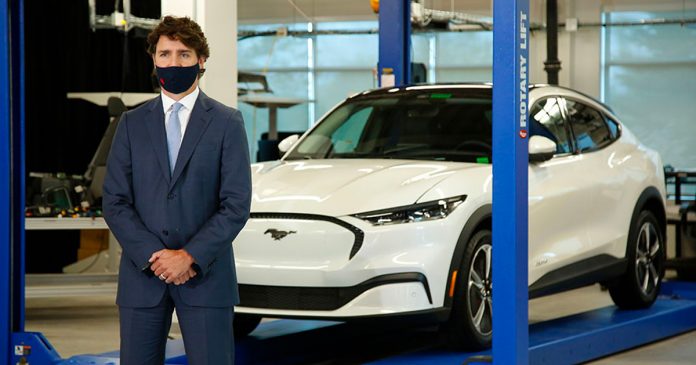Prime Minister Justin Trudeau has made it a priority for his government to promote electric vehicles (EVs) and have the Canadian population convert to “zero-emission vehicles” in the near future to reduce emissions and shrink Canada’s carbon footprint.
However, the case hasn’t been made that the transition to EVs will necessarily reduce emissions. Additionally, the rapid transition to EVs may not be practical for the average Canadian.
Electric vehicles are known for their questionable reliability, high sticker prices and shocking environmental and humanitarian impact.
True North has compiled a list of major issues with the Trudeau government’s narrative that transitioning to EVs is the way to create a more green world.
Nickel, Cobalt and Lithium
Unlike combustion engines that use lead-based batteries, EVs draw their energy from lithium-ion batteries – similar to the batteries used in smartphones.
Three metals – nickel, cobalt, and lithium are required components to make an EV battery, and the extraction of these metals leaves significant environmental and humanitarian harm in its wake.
In 2020, the CBC reported that nickel production results in “air pollution, water contamination and the destruction of habitats.”
Nickel mines in Indonesia’s Obi islands are polluting the nearby Kawasi sea by dumping millions of tonnes of waste into the ocean, making the waters nearly uninhabitable for fish and disrupting the livelihoods of local fishermen.
In the Democratic Republic of Congo, cobalt mine workers are subject to harsh working conditions while earning very little money for their efforts. The mines are rife with child labourers, and dangerous conditions routinely take workers’ lives – sometimes dozens of lives at a time due to mining accidents.
Among other tech companies, Tesla was named in a lawsuit accusing them of aiding and abetting the death and serious injury of child labourers working in Congolese cobalt mines.
Chilean lithium mining is also a problem. There they use a technique that requires massive amounts of water to extract the metal, resulting in Chile’s already dry regions drying out further and damaging the surrounding natural ecosystem.
In Tibet, lithium mining has caused hydrochloric acid and other toxic chemicals to leak into the local water supply from the mine’s evaporation pool.
Despite EV battery production being demonstrably bad for the environment, the Trudeau Liberals have instead championed an Ontario EV battery production facility in the fight to preserve the environment, pouring billions of dollars into the plant’s production.
Insufficient infrastructure
While the Trudeau government strongly encourages Canadian families to switch to EVs, it isn’t apparent that this is the most cost-effective and convenient decision for most people.
Regarding the vehicle’s initial price, the average EV costs $10,000 USD more than the auto industry’s average car.
Furthermore, high-quality EV battery chargers may require substantial upgrades to adapt the owner’s home to support the higher voltage and high-quality chargers needed – sometimes requiring overhauls to a neighbourhood’s entire electrical infrastructure.
Experts predict that a rapid increase in EV ownership may inadvertently lead to blackouts if millions of EVs charge simultaneously.
In California, a heat wave has state energy officials urging citizens to stop charging their electric vehicles, as the power grid faces strain and could possibly lead to a brownout or blackout.
Inconvenience
Since Canada gets very cold for multiple months of the year, Canadians have to worry about EVs battery performance potentially cratering in the chillier conditions.
General Motors is being sued for their 2017 Green Car of the Year Chevrolet Bolt battery performance substantially dropping in colder weather – failing to reach the advertised range of 383 kilometres per charge.
According to AAA, temperatures below 20°F (-6.7°C) can cut an EV battery’s capacity by up to 41%.





















